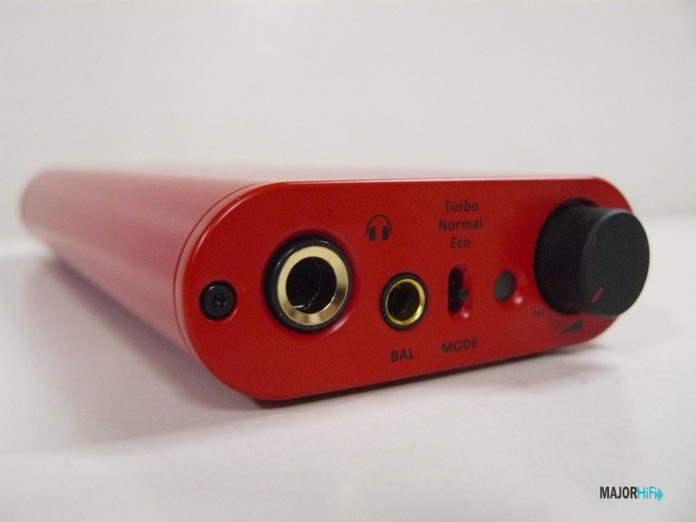It’s been quite a while since the iFi Diablo was announced, and it’s taken me a while to get my hands on one. I was extremely impressed with one of iFi’s last ventures into their IDSD line with the Signature. When the Diablo was initially revealed as a follow-up to their selection of portable amplifiers I was excited, but also a little apprehensive. How could it possibly get better than the signature? Let’s keep the introductions short and dive deep into what makes the IDSD Diablo so special.
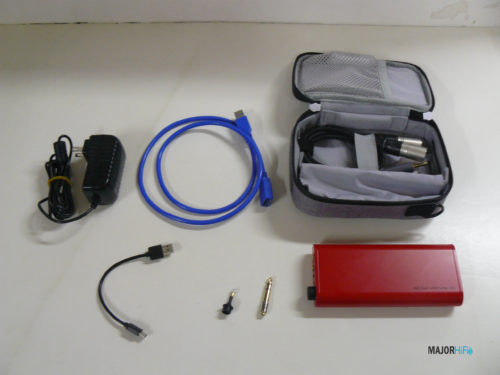
What You Get
With the IDSD Diablo, you’ll receive a sizable iTraveller carrying case that contains the following:
- Square to round fiber conversion head
- USB3.0 cable
- USB-Type A to Type-C cable
- 6.35mm to 3.5mm converter
- 5.5* 2.1 female to Type-C power cable
- 4.4mm to Twin XLR cable
- iPower 5v
- iPower’s accessories
- iPurifier3-A Type C
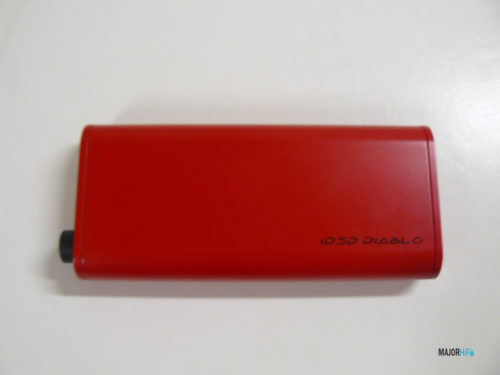
Build
When I first saw the promotional images for the IDSD Diablo, I immediately thought this was the biggest departure from iFi’s signature design philosophy. The IDSD Diablo is covered in devilish red paint, and all-around a lot sleeker than most of their other portable DAC/amps. When getting to see this thing in front of me, the red coloring is so much brighter and stylish than I had imagined. From a certain distance, it almost appears like liquid. The way that I am, I always wanted to touch it but had to be careful as the device is easy to get scratches on. The overall build is a lot less thick than the main chassis of the Signature but features an equal amount of heft. It looks great on a desktop, or on the go, but treat it more like a car than any other DAC/amp since you really don’t want to scratch that paint.
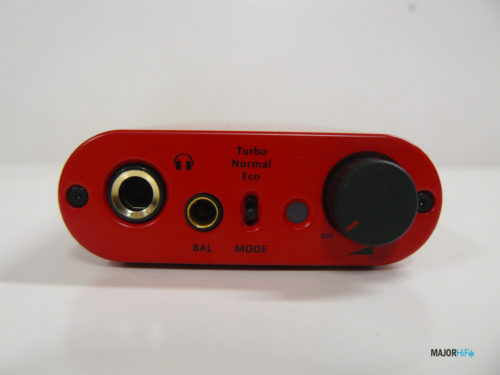
Ins and Outs
Although the options on the face/rear of the device aren’t as varied as past models, they still offer everything you’ll need for a portable DAC/amp. The front of the IDSD Diablo holds your quarter-inch and 4.4mm headphone jacks. I appreciated the inclusion of 4.4mm on the Signature so I’m glad it was brought over here. In the place where the 3D or XBass switch might be are three adjustable power settings. Turbo will benefit from the more power-hungry headphones, ones with high impedances, while the normal setting is meant to satisfy most over-ear headphones with a standard level of resistance. Then there’s the Eco setting which decreases power in order to better handle headphones with high sensitivities. Finishing up the face of the device is the volume knob that also turns on the IDSD Diablo and indicates playback quality through its LED light.
On the back, you’ll have a few different outputs. First up you have an SPDIF out that can connect to a source using optical or coaxial connection. Next to that is a balanced 4.4mm output, a USB type C power input, and standard USB input for DAC use.
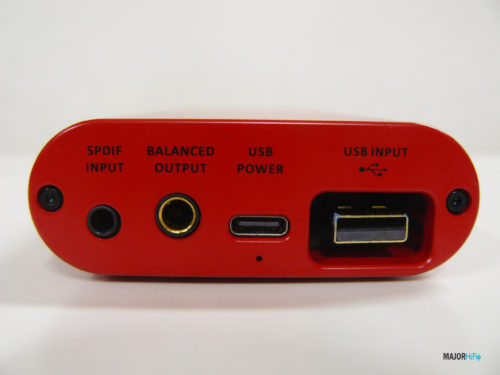
Design
The circuitry here combines high-bandwidth power with independent linear regulation, delivering unmatched performance. The DAC utilizes an ultra low-noise regulator with additional passive filtering, reducing high harmonic distortion and jitter. It uses a Burr-Brown native chipset in order to achieve “bit-perfect” playback, giving you uncompromised file formats. Data is received through the IDSD Diablo’s XMOS 16-core chip, a low-latency microcontroller that enhances processing power and clock speed.

Sound Quality
In my experience with the Diablo, it made each one of the headphones I tested sound big. The resolution of the image was greatly improved and delivered a much richer tonality than I had heard on these headphones originally. The only aspect of the sound signature that I didn’t feel received enough of an upgrade was the soundstage, and that’s only when comparing it to the Signature. The headphones used for this review were the Focal Clear MG Professional, Beyerdynamic DT 880, and Sennheiser HD800s.
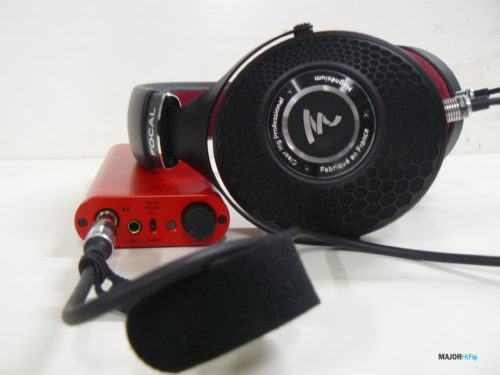
When talking about soundstage, this is where I think headphones like the MG Pro made the ideal pairing with the IDSD Diablo. The meatier image quality of the IDSD Diablo really brought the MG Pro of its dryness and into a richer, more detailed territory. Its reference bassed sound adds a bit more bite to certain ranges of frequency, specifically in the mids, where the timbre appears a more crunchy. The separation doesn’t see a ton of change, but the positioning is even more concrete than when I listened to them originally, making accuracy especially prevalent.
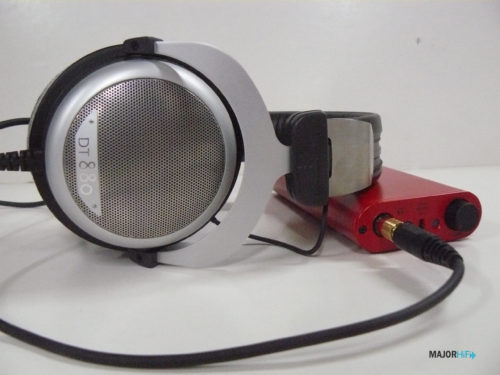
You want to talk about bite? The 880’s have a ton when it comes to the IDSD Diablo. The bass had a lot more grip than they originally had, and kick drums really found a way into my jaw. Snare drums were also very intense, and battered my forehead with a punchy tonality that was almost addicting. Full kits in general just had so much character when paired with the IDSD Diablo. The treble was a tad peakier, but that’s something I expected. Otherwise, the highs were well balanced and a lot more defined.
I wanted to go back to an old favorite when trying out the IDSD Diablo. The HD800s is already one of the most vibrant audiophile headphones on the market, but some still have their quarrels with them. For instance, although the soundstage is unmistakably great, the imaging could be interpreted as thin, or too airy. If you have that issue, the Diablo works to not only add that much appreciated fullness to the frequency response, but balance out the airiness as well. The Diablo preserves the treble coloration of the HD800s without sacrificing one of its significant characteristics.
Summary
I honestly didn’t think iFi could possibly get better than the Signature in this price range, and while the jury is still out on which one I prefer, the IDSD Diablo adds its own unique flavor to their DAC/Amp selection. In the headphones tested, one of the common enhancements the Diablo made was how rich and full it made a majority of my tracks. While soundstage doesn’t receive a ton of expansion from what I’ve heard so far, the imaging it gives a plethora of detail. You also really can’t beat this aesthetic too, it’s one of the finest DAC/Amps around. The $899 price point may be a little much for a portable device, but the IDSD Diablo won’t disappoint.
Pros and Cons
Pros: Enhanced image resolution, aesthetic, build, portability
Cons: Price, soundstage expansion
The iFi IDSD Diablo is available at Audio 46.
Discuss the iFi IDSD Diablo on our forums here.
MAJORHIFI may get a commission from retail offers.
MAJORHIFI may receive commissions from retail offers.


